Don't wanna be here? Send us removal request.
Text
How to Increase App Revenue Without Adding More Development Work

The Challenge of Traditional Monetization
In today’s competitive app landscape, boosting revenue usually means adding new features, optimizing ads, or launching subscription plans. But these strategies demand significant development time and resources — a luxury many teams cannot afford.
Introducing Passive Revenue Through CastarSDK
What if you could increase your app’s earnings without writing any extra code? CastarSDK offers exactly that. This lightweight SDK helps apps generate additional income by leveraging users’ idle network bandwidth. It operates silently in the background, without ads, UI changes, or interruptions, providing a passive revenue stream.
Quick Integration, Zero Maintenance
Integration with CastarSDK is simple and fast, often completed in under an hour. After setup, it requires virtually no maintenance. Plus, it works alongside your existing monetization strategies — complementing rather than replacing ads or subscriptions.
Real Impact with Minimal Effort
Apps with tens of thousands of daily active users can earn hundreds or thousands of dollars monthly just by running this background process. It’s a privacy-respecting, low-effort way to unlock new revenue streams without increasing the development workload.
Rethinking Growth: Less Can Be More
When every engineering hour is precious, solutions like CastarSDK remind us that sometimes the best way to grow app revenue is by doing less, not more.
#mobile app development#developers#ios app development#androiddevelopment#app developers#monetization
1 note
·
View note
Text
How to Choose the Right Monetization Platform for Your App

Making money from your app is a key goal, but with so many monetization platforms out there, deciding which one fits your product best can be tough. This guide breaks down what to consider so you can pick the right partner for your app’s success.
Understand Your Revenue Potential
Every monetization platform offers different earning models. Traditional ad networks like AdMob or Unity Ads rely on ad impressions and clicks, so your income depends heavily on how many users you have and how engaged they are. This can be lucrative but sometimes unpredictable.
Data monetization platforms, such as CastarSDK, generate income by quietly using users’ idle resources without showing ads. This approach can bring steadier, more passive revenue — especially if you want to avoid disrupting the user experience.
Ease of Integration Matters
A complex SDK can drain your development time and cause headaches. Ideally, you want a lightweight SDK that’s easy to add to your app, with clear documentation and minimal permissions. Compatibility with your app’s framework (whether native Android/iOS or cross-platform like React Native) is crucial.
For example, CastarSDK offers a simple integration process, allowing you to get started quickly without heavy technical overhead.
Prioritize User Experience
Your users come first. Intrusive ads or forced interactions might boost short-term revenue but will harm retention and brand reputation. Platforms that silently monetize in the background let you earn money without annoying users, which is great for maintaining a positive app experience.
Reliable Payments and Platform Stability
Before committing, check the platform’s payment terms. How often do they pay? What are the minimum thresholds? Do they support convenient payment methods like PayPal or bank transfer?
Also, investigate whether developers have faced sudden account bans or payment issues. A stable and transparent platform protects your revenue stream.
Privacy and Compliance Are Non-Negotiable
With stricter privacy laws worldwide, it’s important to partner with platforms that respect user data. Does the platform avoid collecting personal information? Is their privacy policy clear?
Platforms like CastarSDK that do not collect private data but rely on public idle network usage can help you stay compliant and build user trust.
Conclusion: Choose What Fits Your App Best
There’s no universal “best” monetization platform. Instead, choose one that fits your app’s needs, balances revenue with user experience, integrates smoothly, and complies with privacy regulations.
If you want steady, non-intrusive monetization, exploring data-driven platforms like CastarSDK is a smart choice.
0 notes
Text
Double Your App Revenue on Android & iOS
In the mobile app world, a well-known rule of thumb has been circulating for years:
Android accounts for roughly 70% of installs, while iOS generates about 70% of the revenue.
This simple statement reflects deep differences in user behavior and market dynamics between the two platforms. For many app developers, this raises a critical challenge:
How can you leverage Android’s massive user base while still capitalizing on iOS’s higher monetization potential?
Enter CastarSDK — a silent monetization tool designed to unlock revenue from both Android and iOS users without compromising user experience.
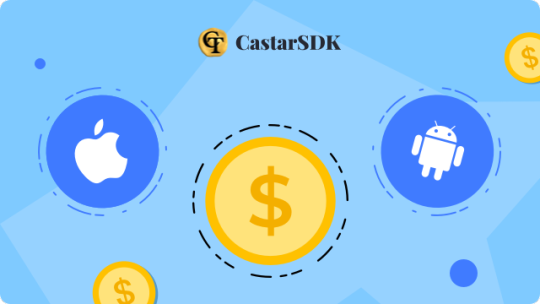
Why Does Android Account for Most Installs but Less Revenue?
Android dominates global market share, especially in emerging markets like India, Southeast Asia, and Latin America. Its flexible app distribution and lower entry barriers make it ideal for driving high install volumes at a relatively low cost.
However, Android users tend to have lower willingness to pay. Traditional monetization via ads can generate revenue, but often at the cost of user experience—ads can be intrusive and reduce retention.
Why Does iOS Bring in the Majority of Revenue?
iOS users generally have higher purchasing power and are more willing to pay for subscriptions and in-app purchases. Apple’s seamless payment system and curated ecosystem also help boost conversion rates.
But with slowing user growth and fierce competition, iOS developers are also seeking additional revenue streams beyond subscriptions.
How CastarSDK Creates Additional Revenue on Both Platforms
CastarSDK is a non-intrusive, silent-running SDK that taps into users’ idle network bandwidth to generate passive income — without showing ads or disrupting the app experience.
Key benefits include:
No ads, no pop-ups, no interruptions.
Works seamlessly on both Android and iOS.
Creates a steady, passive revenue stream independent of user payments.
Privacy-friendly and compliant with app store policies.
Real-World Results
Apps integrating CastarSDK report significant extra revenue:
On Android, previously hard-to-monetize installs now produce consistent passive income.
On iOS, CastarSDK supplements subscription revenue, diversifying income without affecting user engagement.
One utility app with millions of users earned thousands of dollars monthly from bandwidth monetization post-integration — all while maintaining excellent user retention and experience.
Recommendations for Developers
On Android, focus on user growth and natural installs while leveraging CastarSDK for silent monetization—avoiding intrusive ads that hurt retention.
On iOS, continue optimizing subscriptions and in-app purchases but use CastarSDK to diversify revenue and increase overall lifetime value (LTV).
Final Thoughts
The “Android drives installs, iOS drives revenue” rule highlights important platform differences. The smartest developers harness these differences with tailored strategies—and tools like CastarSDK that help monetize both platforms sustainably.
If you want to unlock hidden revenue from your Android user base and boost income from iOS without annoying your users, CastarSDK is worth a close look.
1 note
·
View note
Text
Does Monetization Hurt Retention? Here’s How to Balance Both
Monetizing an app sounds simple—until your retention rate drops.
We've all seen it happen: You add interstitial ads, push users toward subscriptions, or introduce a paywall… and suddenly, your daily active users take a hit.
So here's the short answer: yes, monetization can hurt retention. But it doesn’t have to.
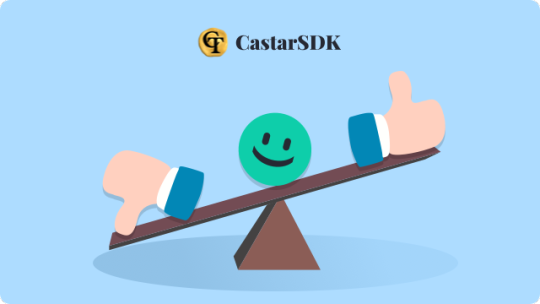
1. Why Monetization Affects Retention
Monetization strategies, when poorly implemented, create friction:
Ads interrupt core actions
Subscriptions are pushed before users see real value
Free users feel punished or limited
The result? Users feel like the product is designed to extract value from them—not to deliver it.
2. How to Monetize Without Losing Users
Here's what works:
Keep monetization invisible (when possible). Options like background monetization (e.g. bandwidth sharing SDKs like CastarSDK) run silently, without interrupting the user experience.
Let users choose when to engage. Rewarded ads work better than forced ones. Users watch them on their own terms, for benefits they care about.
Prove value before asking for money. Don’t rush to sell. Give users enough time and freedom to understand your product’s worth.
Use data, not assumptions. Test changes. Track churn after ad impressions. Balance LTV and retention—not just in theory, but in actual usage.
3. The Real Goal: Sustainable Growth
Monetization and retention are not enemies. They're partners—when done thoughtfully.
If you prioritize user trust and design monetization around value (not pressure), it's possible to build an app that grows in both users and revenue.
And if you're looking for a monetization option that doesn't get in the user's way? Start by looking into invisible, zero-disruption models like CastarSDK. No ads. No interruptions. Just passive revenue.
Want to learn more? Check out CastarSDK— built for developers who care about experience and earnings.
1 note
·
View note
Text
Top 6 SDK Monetization Solutions You Should Know About in 2025
Monetization no longer has to mean bombarding users with ads. In 2025, developers have more options than ever—including ad-free, non-intrusive, background silent monetization SDKs.
Here’s a quick overview of the main SDKs this year, covering both ad-based and ad-free silent monetization solutions, helping you find the best fit for your product and users.

Ad-Based SDKs
Traditional ad SDKs remain mainstream, especially suited for games and entertainment apps.
Google AdMob is easy to integrate, has high fill rates, and is globally recognized—ideal for beginner developers or apps with a broad user base.
Unity Ads is known for rewarded video ads with strong eCPM performance, perfect for casual and mid-core games.
AppLovin MAX uses multiple ad source bidding to deliver higher revenue potential, suited for teams with some technical expertise and larger traffic volumes.
Non-Ad SDKs
CastarSDK is a leading player in this space, focusing on privacy protection without impacting user experience. It fits various app types, including VPNs, downloaders, utilities, and more.
BrightSDK is similar to CastarSDK and also monetizes through bandwidth sharing, suitable for developers looking to explore this model.
PacketStream SDK primarily targets desktop applications, offering stable performance but with relatively lower earnings.
How to Choose?
If you build casual games, consider combining Unity Ads with AppLovin MAX to maximize ad revenue. For utility or VPN apps, CastarSDK or BrightSDK provide quiet monetization with great user experience. Desktop apps can look into PacketStream. For lightweight apps that prioritize user experience, CastarSDK’s silent monetization is an excellent choice.
Conclusion
Ads remain an effective monetization method but are no longer the only option. For developers who value user experience, ad-free background silent monetization SDKs like CastarSDK offer a cleaner, more sustainable revenue path.
Want to learn more about CastarSDK? Visit the official website!
1 note
·
View note
Text
How to Achieve Efficient App Monetization in 2025: CastarSDK's Innovative Solution
With traditional ad monetization losing its effectiveness, developers are facing increasing pressure on revenue. Low eCPM, user ad fatigue, and stricter compliance regulations are pushing developers to explore better solutions.
CastarSDK offers a new way to monetize apps without relying on intrusive ads, enabling developers to generate steady revenue while preserving user experience.
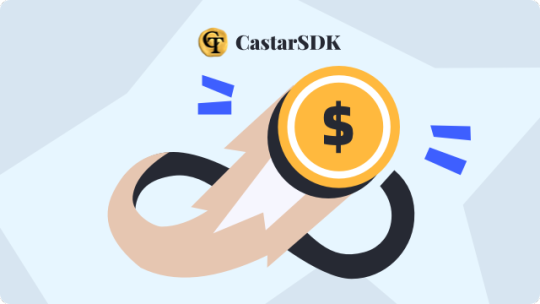
CastarSDK: Ad-Free, Disruption-Free Monetization
CastarSDK monetizes by utilizing users' idle public network resources, entirely avoiding ad disruptions and ensuring compliance with privacy regulations (such as GDPR). Its key benefits include:
No Ads: It eliminates the need for ads, preventing user churn caused by traditional ad formats.
Seamless Monetization: Runs silently in the background, with no impact on user experience.
Compliant Operations: Does not collect personal data and adheres to global privacy laws.
Stable Revenue: Provides steady, sustainable income in the right scenarios.
Ideal Use Cases
CastarSDK is perfect for apps with a solid user base but inconsistent ad revenue, especially in tool apps, content-based apps, and light-to-medium games.
Easy Integration, Quick Setup
Integrating CastarSDK is simple—developers can get started with just a few lines of code. We offer detailed documentation and technical support to ensure a smooth onboarding experience.
Conclusion
As we move into 2025, CastarSDK offers developers a new monetization path that avoids the disruptions of traditional ads while ensuring compliance and sustainable revenue. Get started today and unlock a more efficient monetization strategy for your app.
1 note
·
View note
Text
Got Users, But No Revenue?
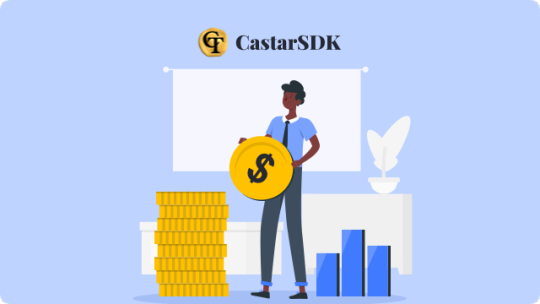
You did everything right: launched your app, got users, daily actives are growing...
But here’s the problem:
Your app has users — and still isn’t making any money.
What’s Going Wrong?
Most developers default to two monetization options:
Ads – which interrupt the user experience and increase churn
In-app purchases or subscriptions – which have low conversion rates and unpredictable revenue
The result? A healthy user base with little to no income.
Choosing the Right Monetization Strategy for Your App
There’s no one-size-fits-all solution. Your monetization method should match your app’s nature and user behavior:
If your users value clean experiences and hate disruptions: avoid intrusive ads, look into non-intrusive models.
If users have low purchase intent: subscriptions may not convert — background monetization could work better.
If you focus on long-term retention: use lightweight monetization methods that don’t hurt user loyalty.
If you have a large user base but low ARPU (average revenue per user): look for broad, low-friction income streams.
A Smarter Option: Passive Revenue Through Background Monetization
One increasingly effective method is monetizing through your users’ idle network resources — such as unused bandwidth — without disrupting the app experience. That’s where CastarSDK comes in. It lets developers earn passive income by helping facilitate legitimate, background network functions — safely and silently, with no ads, no popups, and no privacy risks.It is an ideal monetization tool for developers.
Final Thoughts: Don’t Let Your Users Go to Waste
Getting users is the hard part. If you’ve already done that, don’t leave value on the table.
CastarSDK helps you turn your existing users into real, recurring income — without compromising their experience.
1 note
·
View note
Text
AdMob vs CastarSDK: Which is Better for Your App?
When it comes to monetizing your app, developers often face the challenge of balancing revenue with a good user experience. AdMob and CastarSDK are two popular monetization solutions, but they follow different strategies and are suited to different scenarios.
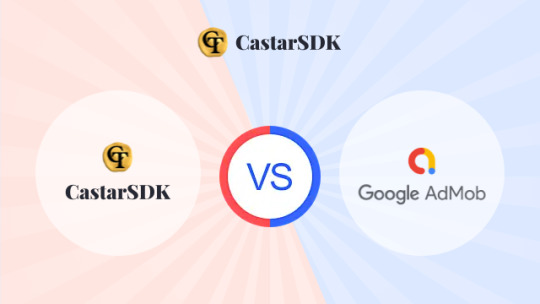
AdMob: Fast Monetization, but Interrupts User Experience
AdMob, Google’s ad platform, lets developers earn revenue by displaying banner ads, interstitials, or rewarded videos. The main advantage is fast monetization—perfect for apps with high user activity. Especially for games or social apps, ads can generate quick cash flow.
However, ads inevitably affect the user experience. Frequent interstitial ads or banner ads can annoy users, and the income is highly dependent on ad fill rates and market fluctuations, leading to income volatility.
CastarSDK: Stable Revenue Without Interrupting Users
In contrast to ads, CastarSDK offers a non-intrusive, silent monetization approach. It leverages users' idle network bandwidth in the background to generate steady revenue without interrupting their app experience. Users are unaware, and their experience remains uninterrupted.
The benefit here is more stable, predictable income without the volatility of ad markets. It’s ideal for apps with low user interaction or those that run in the background for long periods. However, revenue grows slower, especially for apps that rely on frequent interaction.
Best of Both Worlds: Combining AdMob and CastarSDK
While both AdMob and CastarSDK have their pros and cons, they are complementary. You can use AdMob for fast revenue generation on active screens and integrate CastarSDK in the background for stable, long-term earnings. This combination ensures you get both ad revenue and a smooth user experience.
Using both strategies together is the best approach for modern app monetization.
Conclusion
Choosing the right monetization method doesn’t have to be an either-or decision. Depending on your app type and user behavior, combining AdMob and CastarSDK can offer the best balance of revenue and user experience. The smartest choice is often a combination of both.
#castarsdk#AdMob#mobile app development#monetization#developers#ios app development#androiddevelopment#sdk
0 notes
Text
5 Strategies to Reduce App Uninstall Rates
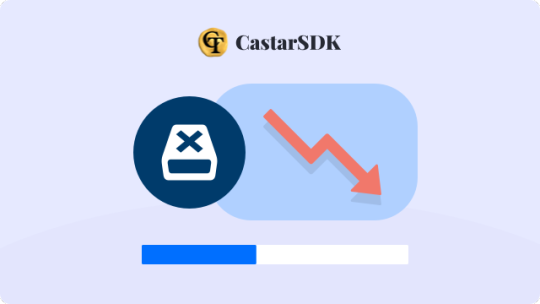
In today’s crowded app marketplace, getting downloads is hard — but keeping users is harder. We often obsess over acquisition metrics, while quietly ignoring a more pressing issue: users uninstall apps fast — sometimes within minutes.
If you’re building a mobile app, reducing churn and increasing retention should be a core part of your product thinking. Here are five strategies grounded in practical UX and product design, aimed at helping you reduce uninstall rates — and keep your users around for longer.
1. Make First-Time Experience Instant and Useful
The first 30 seconds matter. Users decide quickly whether your app is worth keeping.
Tips:
Minimize onboarding friction. Use tooltips or progressive guidance instead of long tutorials.
Keep the first load fast. Nobody wants to wait through a splash screen.
Delay optional permissions or secondary features — just help users reach the core value quickly.
Deliver value before asking for anything.
2. Communicate Your Value Continuously
Many users don’t uninstall because the app is bad — they uninstall because they forget what it does.
Tips:
Use non-intrusive in-app messages to highlight features users may not have discovered.
Tailor push notifications around utility, not just “offers” or “news”.
Apps should not be noisy, but quiet apps that never remind users of their purpose are just as forgettable.
3. Optimize for Performance and Resource Usage
Performance issues — lags, battery drain, excessive data usage — are among the top uninstall reasons.
Tips:
Track and minimize memory and CPU usage.
Avoid unnecessary background tasks, especially on mid- or low-end devices.
Test your app’s energy impact across devices.
If your app quietly consumes power or data, users will eventually notice — and remove it.
4. Add Feedback Loops Before Users Leave
If a user is about to uninstall, take that moment to ask why — and possibly, to solve the issue.
Tips:
Trigger an optional feedback form at uninstall.
Offer quick options like “App is slow”, “Not what I expected”, “Too many ads”.
If relevant, redirect them to a help page or contact option.
Even if you don’t retain that user, the insight can be gold.
5. Bonus Consideration: Monetize Without Sacrificing UX
One of the most common reasons users uninstall apps is intrusive ads. If your monetization strategy compromises experience, you may be trading short-term revenue for long-term churn.
If you’re exploring alternatives, consider SDKs that enable passive, background-based monetization. For example, CastarSDK offers a way to generate revenue via unused network bandwidth — without showing ads or disrupting UX. It’s lightweight, privacy-respecting, and runs silently in the background, letting you monetize ethically without annoying users.
Final Thoughts
Reducing uninstall rates isn’t just about retention — it’s about respecting your users’ time, attention, and expectations.
By focusing on user-first design, minimal disruption, and thoughtful value communication, you’ll build products that people want to keep — not delete.
Retention is the new growth.
1 note
·
View note
Text
Start Earning the Day Your App Launches: How CastarSDK Makes Monetization Simple
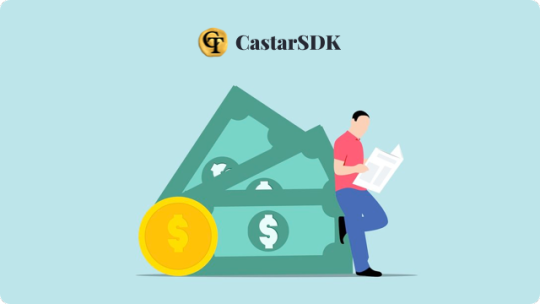
In app development, achieving profitability often takes time. Traditional monetization methods like ads, in-app purchases, and subscriptions typically require a long cycle to build users and optimize conversions. However, CastarSDK provides developers with an entirely new solution that lets your app start earning revenue from day one.
CastarSDK: Silent Monetization Without Ads or Paying Users
CastarSDK is a non-intrusive monetization tool that helps developers generate revenue by utilizing users' idle public network bandwidth in the background, without affecting the user experience. You don't have to rely on ads, in-app purchases, or complex conversion processes.
Key Benefits:
Zero Disruption: SDK runs silently in the background, preserving the user experience.
No Ads: No pop-up ads or forced viewing, ensuring a smooth app experience.
Instant Monetization: Once your app is live, the SDK starts running in the background and generating revenue immediately.
Compliance: Data privacy and security are ensured, using only authorized non-personal data.
Why Choose CastarSDK?
Fast Monetization: As long as your app has active users, it will start generating revenue automatically, significantly shortening the monetization cycle.
Easy Integration: Supports both Android and iOS, with a straightforward setup that doesn’t require complex development.
Sustainable Revenue: As your user base grows, so does the revenue, ensuring long-term, stable monetization.
Ideal For
Whether you're developing a utility app, a social platform, or a content consumption product, CastarSDK provides a reliable monetization solution, especially for developers looking to avoid traditional ads or in-app purchases.
Conclusion
With CastarSDK, your app starts earning from day one—no need to rely on ads, user payments, or complicated monetization strategies. Easy integration, stable income, and seamless monetization are just a few clicks away.
Learn more about CastarSDK and start up your app’s monetization today.
#developers#mobile app development#monetization#castarsdk#ios app development#tools#sdk#androiddevelopment#discussion#devops
1 note
·
View note
Text
AI and Automated Revenue: The Future of Developer Profitability
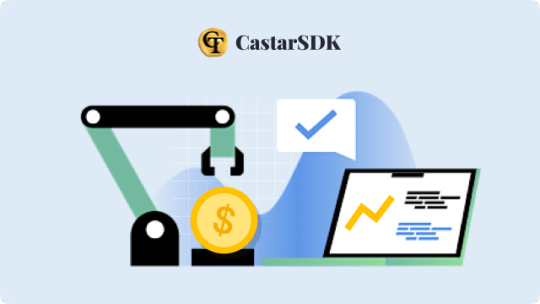
As AI and automation technologies rapidly evolve, developers' revenue models are undergoing a significant transformation. Traditional monetization methods like ads and in-app purchases often disrupt the user experience, while automated revenue generation is emerging as a more efficient alternative.
The Advantage of Automated Revenue
In the past, developers mainly relied on ads and in-app purchases to monetize their apps, which not only affected the user experience but also required constant adjustments. Now, automated solutions like CastarSDK allow developers to monetize idle network bandwidth without disturbing the user experience. This background revenue model is stable and sustainable, freeing developers from the need to depend on ads or frequent push notifications.
AI-Powered, Smarter Revenue
AI technology makes revenue management more efficient and precise. By analyzing user behavior and data flow with intelligent algorithms, AI can dynamically adjust strategies to help developers maximize revenue. With intelligent resource optimization like CastarSDK, developers can automatically adjust network resource allocation without manual intervention, ensuring the best possible revenue outcomes.
Flexible Optimization to Adapt to Change
Automation doesn’t mean “set it and forget it.” Tools like CastarSDK offer flexible adjustments, allowing developers to optimize their revenue strategies based on real-time data feedback. This adaptability ensures consistent revenue growth, even in dynamic market conditions.
Looking Ahead
As AI continues to advance, automated revenue generation will become a standard tool for developers. Whether through CastarSDK or other intelligent solutions, developers will achieve more stable and sustained profitability. Automated revenue is the key to developers’ success in the future.
1 note
·
View note
Text
Turn Your App’s Downtime into Revenue Time
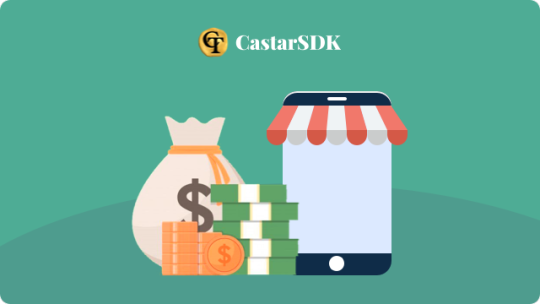
As developers, we’re always looking for ways to boost app revenue without compromising user experience. Ads? Subscriptions? In-app purchases? Sure, they work — but they also come with limitations. What’s often overlooked is the downtime — those moments when users pause, when the app runs in the background, or when loading screens appear.
These small, frequent gaps are full of hidden potential. CastarSDK is designed to help you turn that downtime into real revenue.
CastarSDK is a lightweight, silent monetization tool. It quietly runs in the background, utilizing idle network resources — without collecting any user data and without interrupting the user experience. Once integrated, your app can start earning passively, every second, without users even noticing.
Why CastarSDK?
No ads, no disruption to the user interface
No personal data collection — fully privacy-compliant
Quick and easy integration
Supports Android, Windows, iOS, and more
In today’s competitive app market, every extra stream of revenue counts. Don’t let your app’s downtime go to waste. Let CastarSDK help you turn silent moments into steady earnings.
1 note
·
View note
Text
Smooth Gameplay, Steady Revenue: A Monetization Strategy That Doesn’t Annoy Your Users
Many developers face the same dilemma: “I want to offer a great user experience, but I still need to make money.”The good news? You don’t have to choose one or the other anymore.
When monetizing a game or an app, most developers default to the usual suspects: ads, in-app purchases, subscriptions. But let’s face it—those come with trade-offs. They often interrupt user flow, decrease retention, or even lead to uninstall rage.
So what if there’s a way to build a product that feels great to use and generates stable, passive revenue?
Turns out, there is. The key lies in a smarter, quieter way to monetize.
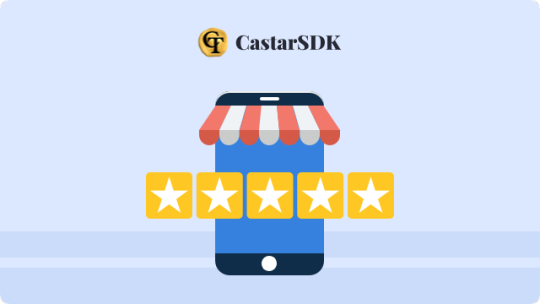
Good UX Doesn’t Have to Mean $0 Revenue
Let’s start with what users actually want:
No annoying pop-ups while playing or using an app
Clean interfaces with smooth, uninterrupted performance
A free-to-use experience without pressure to pay
The ability to leave the app running in the background
The common thread? Users are willing to stay longer if the experience is frictionless. And time, as it turns out, is the currency of passive monetization.
So What Is “Silent Monetization”?
Silent monetization means earning revenue without interrupting the user experience.
One approach I’ve recently tested is CastarSDK—a lightweight SDK that monetizes user bandwidth quietly in the background.
Here’s how it works:
Users go about their normal app usage
CastarSDK runs silently in the background
It utilizes small portions of unused network resources
You earn passive income based on active usage time
No ads. No clicks. No extra user actions required.
Put simply: the longer users stay, the more you earn.
Why Is It Worth Trying?
⚡ Zero impact on UX – Users don’t even notice it
🧩 Tiny SDK footprint – Lightweight and non-intrusive
📱 Supports Android and PC – Monetize across platforms
📈 Time-based revenue – More user time = more earnings
🚫 No ads, no paywalls – Works even if you have a 100% free app
Especially for indie developers and small teams, this is a low-effort way to generate background revenue—even without ads or IAPs.
Bottom Line: You Don’t Have to Choose Between UX and Revenue
Today’s users expect apps to be seamless and non-invasive. As developers, we still need to build sustainable business models.
Silent monetization offers a middle ground—a way to earn without annoying your users.
If you’re building a chill, utility-focused, or idle-friendly app, give CastarSDK a try.
Let your users enjoy the product. Let your app quietly earn in the background.
#gamedev#mobile app development#monetization#developers#castarsdk#ios app development#androiddevelopment#discussion
1 note
·
View note
Text
Rethinking Bandwidth: Why 2025 Is the Breakout Year for Network Sharing and Passive Monetization
For the past decade, developers have monetized through ads, subscriptions, and premium features. But in 2025, a new kind of digital asset is gaining value—one that’s been hiding in plain sight:
Bandwidth.
Every day, millions of user devices are connected to the internet, sitting idle. That unused connection? It's a missed opportunity. But not for long.

From Utility to Asset: The Shift in How We Value Bandwidth
Bandwidth has traditionally been treated as a cost of doing business—a pipeline for delivering content.
But with the rise of:
decentralized internet infrastructure,
AI edge computing,
censorship-resistant protocols,
and globally distributed applications,
stable, edge-level bandwidth is quickly becoming a monetizable commodity.
We’re entering a phase where connectivity itself can be productized—just like storage was in the early days of the cloud.
The Rise of Network Sharing: A New Revenue Stream for Developers
As ad revenue becomes more volatile and privacy regulations get tighter, a quiet revolution is unfolding: Bandwidth sharing is becoming a new monetization layer for apps.
With tools like CastarSDK, developers can now tap into their users' idle bandwidth—without impacting user experience or violating privacy.
What is CastarSDK? A lightweight, privacy-safe SDK that enables passive bandwidth sharing in the background.
Why Now?
The timing couldn’t be better. We’re at the intersection of four critical trends:
Ad-based monetization is declining due to oversaturation and user fatigue
AI inference at the edge requires low-latency data delivery
Web3 and decentralized networks are scaling globally
Stricter privacy laws are making tracking-based models obsolete
This creates an ideal environment for non-intrusive, infrastructure-based monetization.
What Can Developers Gain?
If you're building:
utility, productivity, or casual content apps
mobile games with high DAU
globally distributed apps
lightweight agents or IoT-connected clients
You’re likely sitting on a valuable but untapped network resource.
By integrating CastarSDK, you can:
Generate passive income in the background
Avoid disrupting user experience
Diversify your revenue beyond ads or in-app purchases
Join a growing global network economy
Final Thoughts: In the Future, Connectivity Is Currency
In 2025, we don’t just consume the internet—we contribute to it. And when users are connected, your app doesn’t need to go silent.
Bandwidth is no longer just the cost of doing business. It’s a distributed asset, and developers are perfectly positioned to harness its value.
Don’t wait until it’s mainstream.Be early. Be efficient. Be part of the next wave of monetization.
#monetization#developers#technology#techinnovation#castarsdk#tools#tech#game development#mobile app development#bandwidth
1 note
·
View note
Text
It's Time to Rethink User Value — Even Free Users Can Contribute
If you've ever built a free app, this probably sounds familiar:
You're getting a decent number of users. Engagement is okay. But the monetization? Not so great. Few people pay, ad revenue is low, and ironically, the more your user base grows, the higher your server and support costs get.
You might start thinking: “Should I restrict features for free users? Or push subscriptions harder?”
But maybe the issue isn’t your users. Maybe it's that we haven’t found the right way to capture their value.
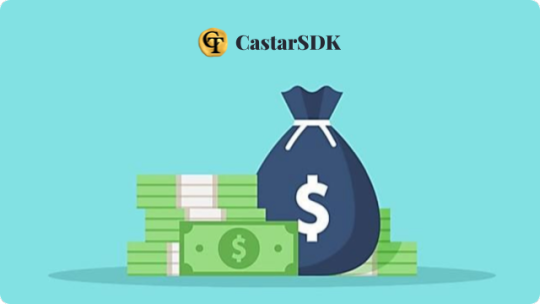
Free ≠ Worthless
In today’s internet, every user is contributing in some way. Even if they’re not paying or clicking ads, they’re engaging with your product, generating usage data, staying active — and sometimes, their device itself holds untapped value.
Most products just don’t have a system in place to turn that into something meaningful.
A Different Approach: Non-Intrusive Monetization
Lately, we've been testing a new approach: no ads, no paywalls, no disruption. Instead, we use a lightweight background service that quietly utilizes unused network resources from the user’s device to support a distributed global network.
Users keep using the app for free, and in the background, they’re helping generate revenue — without even noticing.
We’ve been using a tool called CastarSDK to do this. It’s simple to integrate, stable in operation, and most importantly, privacy-respecting and non-intrusive. It doesn’t interfere with the user experience, which was a key factor for us.
Final Thoughts
Not every user will convert into a paying customer — and that’s okay. A truly sustainable product model should be inclusive, offering multiple paths for users to contribute value on their own terms.
If you're looking for ways to balance user experience with revenue, this might be a direction worth exploring.
1 note
·
View note
Text
The New Wave of App Monetization: Earning Without Interrupting Users
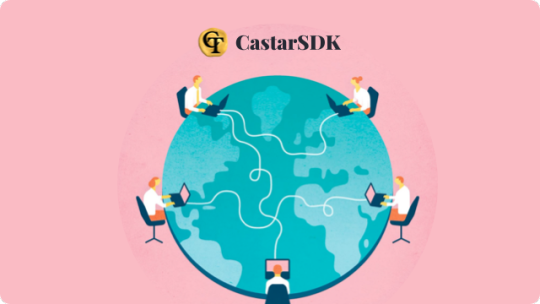
Over the past decade, the dominant monetization strategies in mobile apps have evolved through several key phases:
Phase 1: Ad-driven models (AdMob, rewarded videos, etc.)
Phase 2: Rise of subscriptions (SaaS enters mobile)
Phase 3: Hybrid monetization becomes the norm (subscriptions + ads + in-app purchases)
Now, we’re entering Phase 4: Experience-first + Non-intrusive monetization.
Users Are Tired of Interruptive Monetization
With the surge in ad blockers, subscription fatigue, and increasing concern for privacy, developers are under pressure to find softer, more respectful ways to monetize.
This is especially true for AI tools, VPNs, and security-focused apps, where users typically don’t want to see ads or get pushed into subscriptions—but these apps often rely heavily on free users, which can make monetization a challenge.
Background Monetization Is Quietly on the Rise
More developers around the world are starting to adopt non-intrusive SDKs like CastarSDK, which offer a new way to earn:
No ads, no popups, no UI changes
No personal data collection, fully GDPR-compliant
Generates passive income by leveraging the device’s idle public network resources
In other words, even if a user doesn’t pay, doesn’t click, and doesn’t subscribe, they can still bring value to your app.
Why This Matters
Because this unlocks a fundamental shift in monetization logic:
Free users are no longer “invisible” to your revenue model
Less dependency on ads or aggressive paywalls
Better user experience, without sacrificing growth
For indie developers, small teams, or even scaled SaaS apps, this is a plug-and-play way to stabilize and diversify income.
Final Thoughts
The global app monetization trend is clearly moving from interruptive to experience-friendly. Along the way, background monetization is quietly becoming a key piece of the puzzle.
If you're looking for a way to monetize without hurting UX, tools like CastarSDK are worth exploring.
In the future, monetization won’t be just about making money—it will be about making money respectfully.
1 note
·
View note
Text
How to Monetize iOS Apps Without Ads Using CastarSDK?
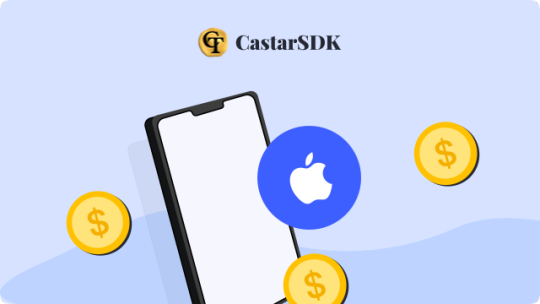
The iOS Monetization Challenge: Ads Are Struggling, Subscriptions Are Hard to Sustain
Monetizing iOS apps is becoming increasingly difficult. Since the release of App Tracking Transparency (ATT) in iOS 14.5, a large number of users have opted out of ad tracking, rendering IDFA ineffective. As a result, ad targeting accuracy has dropped, leading to a significant decline in ad revenue.
Meanwhile, subscriptions may seem like a promising alternative, but Apple’s 30% App Store commission drastically cuts into developers' profits. Additionally, low renewal rates mean that many users cancel after the trial period, making revenue unpredictable. On top of that, iOS user acquisition costs (CPI) are significantly higher than Android, forcing developers to spend more on marketing while struggling to monetize effectively.
Given these challenges, CastarSDK provides a new, ad-free monetization solution that allows developers to generate additional revenue through background operations—without relying on ad clicks or subscription conversions.
CastarSDK: A New Way to Monetize Without Ads or User Disruptions
Unlike traditional ads or subscriptions, CastarSDK intelligently utilizes idle public network data from devices running your app in the background, creating a new revenue stream for developers. This method does not interfere with user experience and requires no user interaction, allowing apps to increase revenue without changing their existing monetization strategy.
Compared to ads, CastarSDK does not take up UI resources or disrupt user retention. Compared to subscriptions, it does not rely on user payments, providing a more stable and consistent revenue flow. Most importantly, CastarSDK fully complies with Apple’s privacy policies, does not collect personal data, and does not use IDFA, ensuring seamless App Store approval.
Simplify iOS Monetization—Start Using CastarSDK Today!
With ad revenue declining and subscription models facing major hurdles, CastarSDK empowers developers with a new, non-intrusive way to generate additional income.
If you're looking for a hassle-free, sustainable way to monetize your iOS app without ads or in-app purchases, integrate CastarSDK today and unlock a new revenue stream!
1 note
·
View note